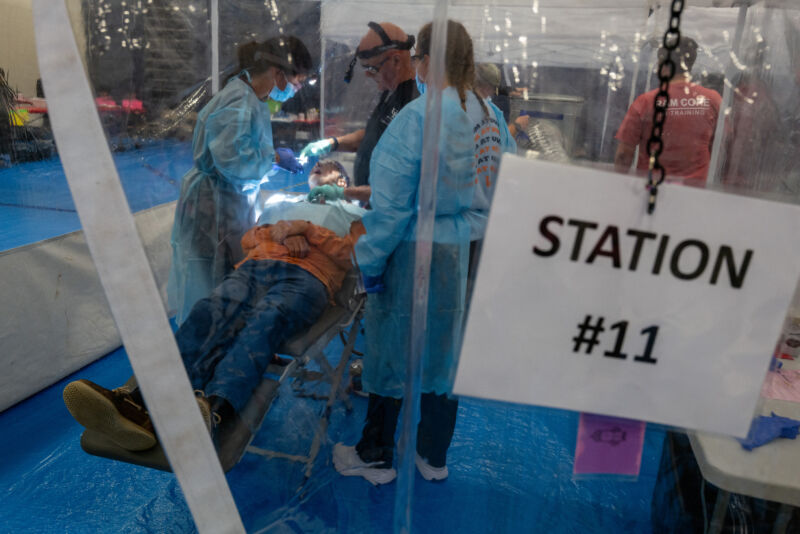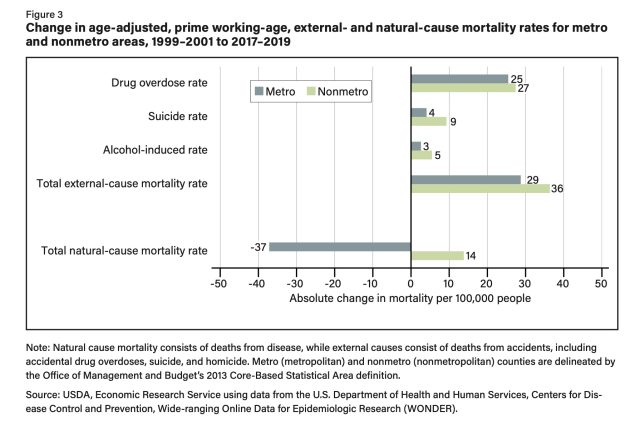The urban-rural death divide is getting alarmingly wider for working-age Americans

Enlarge / Dental students, working as volunteers, attend to patients at a Remote Area Medical (RAM) mobile dental and medical clinic on October 7, 2023 in Grundy, Virginia. More than a thousand people were expected to seek free dental, medical and vision care at the two-day event in the rural and financially struggling area of western Virginia. (credit: Getty | Spencer Platt)
In the 1960s and 1970s, people who lived in rural America fared a little better than their urban counterparts. The rate of deaths from all causes was a tad lower outside of metropolitan areas. In the 1980s, though, things evened out, and in the early 1990s, a gap emerged, with rural areas seeing higher death rates-and the gap has been growing ever since. By 1999, the gap was 6 percent. In 2019, just before the pandemic struck, the gap was over 20 percent.
While this news might not be surprising to anyone following mortality trends, a recent analysis by the Department of Agriculture's Economic Research Service drilled down further, finding a yet more alarming chasm in the urban-rural divide. The report focused in on a key indicator of population health: mortality among prime working-age adults (people ages 25 to 54) and only their natural-cause mortality (NCM) rates-deaths among 100,000 residents from chronic and acute diseases-clearing away external causes of death, including suicides, drug overdoses, violence, and accidents. On this metric, rural areas saw dramatically worsening trends compared with urban populations.

Change in age-adjusted, prime working-age, external- and natural-cause mortality rates for metro and nonmetro areas, 1999-2001 to 2017-2019. (credit: USDA)
The federal researchers compared NCM rates of prime working-age adults in two three-year periods: 1999 to 2001, and 2017 to 2019. In 1999, the NCM rate in 25- to 54-year-olds in rural areas was 6 percent higher than the NCM rate of this age group in urban areas. In 2019, the gap had grown to a whopping 43 percent. In fact, prime working-age adults in rural areas was the only age group in the US that saw an increased NCM rate in this time period. In urban areas, working-age adults' NCM rate declined.